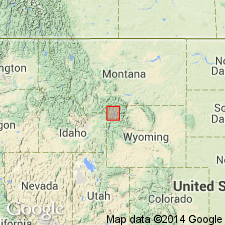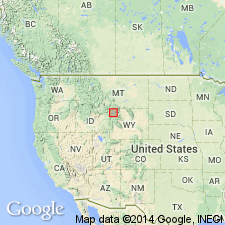
- Usage in publication:
-
- Red Mountains rhyolite
- Modifications:
-
- First used
- Areal extent
- Dominant lithology:
-
- Rhyolite
- AAPG geologic province:
-
- Yellowstone province
Summary:
[Probably "named" for Red Mountains in the south part of Yellowstone National Park, west of Heart Lake, though intent to name not stated.] Are limited to Red Mountains in the Yellowstone province, WY. Composed of rhyolite, an altered mass of flows and breccias, and a subordinate amount of pre-Tertiary sediments. The commonest type of rhyolite is dense, flinty, gray to pink, that is usually streaked with light seams of tridymite and alkali feldspar. Is unconformably overlain by Yellowstone tuff. Assigned to the Pliocene.
Source: GNU records (USGS DDS-6; Denver GNULEX).

- Usage in publication:
-
- Red Mountains Rhyolite
- Modifications:
-
- Not used
Summary:
Not used. Is considered to be part of the upper member of Huckleberry Ridge Tuff (new) of Yellowstone Group (raised in rank from formation) in Yellowstone National Park, Yellowstone province, WY. The upper member superficially resembles a rhyolitic lava, though it is an ash-flow tuff.
Source: GNU records (USGS DDS-6; Denver GNULEX).
For more information, please contact Nancy Stamm, Geologic Names Committee Secretary.
Asterisk (*) indicates published by U.S. Geological Survey authors.
"No current usage" (†) implies that a name has been abandoned or has fallen into disuse. Former usage and, if known, replacement name given in parentheses ( ).
Slash (/) indicates name conflicts with nomenclatural guidelines (CSN, 1933; ACSN, 1961, 1970; NACSN, 1983, 2005, 2021). May be explained within brackets ([ ]).

